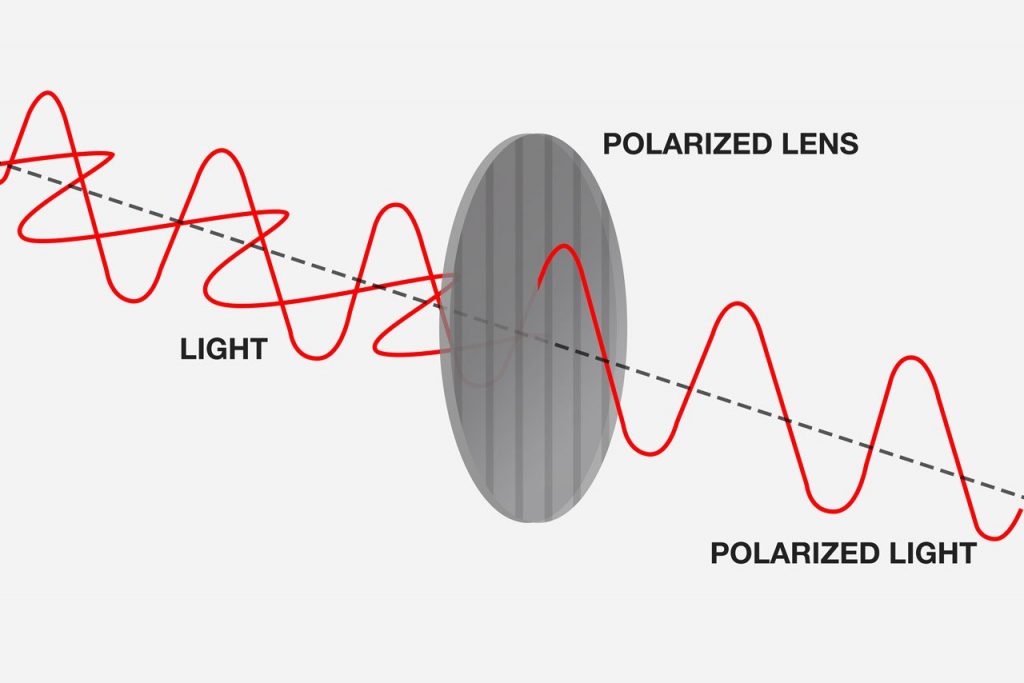Polarization may be the most important element in any pair of sunglasses. Polarized lenses cut down on glare from the water, glass, or other reflections, enabling fisherman, drivers, hikers, or anyone outside to see substantially better, and be more comfortable.
Polarized lenses also protect your eyes and skin from UV rays that can damage your retina over time, making it an essential feature when making a purchase. You’ll find that various lens colors and types are available to choose from that are best for certain situations.
Quick Navigation:
Clear Lenses | Clear Lense Alternatives | How Polarization Works | Lens Types Explained
Can You Get Clear Polarized Glasses?
The short answer here is no. To have polarization, your glasses must at least have some tint to them. This is due to how polarization works (explained below).
What To Look For Instead Of Clear Polarized Glasses?
If you are looking for clear polarized lenses, you are likely thinking about everyday use, or nighttime use. Instead of opting for a darker shade, we recommend that you find a pair of glasses with lens colors of green, yellow, or amber. These colors allow for more light to pass through than other tints while increasing contrast. This makes these colors a bit more suitable for night time driving, everyday use, or darker conditions. This is why you’ve probably seen those commercials with large yellow lenses for nighttime driving.
So instead of searching for a clear lense, opt for a yellow, green, or amber lense that only has a minor tint.
Here are some examples of polarized glasses that are better suited for darker conditions:
You can find inexpensive yellow tinted polarized lenses on Amazon here.
Or, if you are looking for high quality glasses – here are some of our favorite green lenses from Costa
If you are looking for a pair of polarized glasses for fishing, or really any use, be sure to read our guide on the best fishing sunglasses. You may also want to read our complete guide to sunglass tint colors to understand each color’s best use cases.
How Lense Polarization Works
When lenses are being manufactured, a chemical is applied to the glass / plastic lens to polarize it. This chemical is placed on the lens in a vertical orientation that blocks horizontal light coming from glare and reflections. This polarization darkens your vision, but tends to eliminate glare, reduce eye strain, protect from UV rays, and make seeing contrast a bit easier.
This laminate layer is often applied to the surface of cheaper sunglasses which enables that polarization to wear off. More expensive lenses will have polarization applied between layers of the lenses. This often enables them to last longer and be more durable.

Lens Tints & Types Explained
The type of lens you utilize for your glasses determines their durability, clarity, and cost. Polycarbonate lenses are more durable than glass lenses and are generally cheaper. Glass lenses are often the clearest, though they are heavier, and more prone to shattering. It is your choice which type of lens you prefer, so read below for or breakdown of different lens materials. If you do activities that subject your glasses to potentially being hit or shattered, opt for sturdier polycarbonate lenses.
There are three main types of lens materials: Polycarbonate, Glass, and Trivex.
Polycarbonate Lenses
Polycarbonate lenses tend to be the cheapest lenses, and the most durable, lightweight, and safest lenses. Because they are plastic, they are prone to more scratches, but also will not shatter with impact like glass lenses. Polycarbonate lenses will not be as clear as glass lenses. They are meant for situations when your glasses need to be durable, when clarity isn’t completely essential, or if your budget is on the lower end.
Glass Lenses
Glass lenses are the most clear lens option, and are the most resistant to scratches. Glass lenses tend to be the most expensive option. They are also prone to shatter with impact, making them dangerous for certain use cases. Use cases like yard work, construction, or other situations where protection is necessary may be a reason to avoid glass.
Trivex Lenses
Trivex lenses are more expensive than polycarbonate lenses, less expensive than glass, and are just as lightweight. They are often considered the middle ground between glass and polycarbonate. They are shatter resistance, but are capable of more clarity than polycarbonate, and are slightly harder to scratch. Think of this type of lense as the compromise.
Lens Color
The color you choose is up to your preference, but it is important to understand that some colors are better for certain scenarios. We recommend you read our complete guide to lens color selection: Read Here
Max DesMarais is the founder of hikingandfishing.com. He has a passion for the outdoors and making outdoor education and adventure more accessible. Max is a published author for various outdoor adventure, travel, and marketing websites. He is an experienced hiker, backpacker, fly fisherman, backcountry skier, trail runner, and spends his free time in the outdoors. These adventures allow him to test gear, learn new skills, and experience new places so that he can educate others. Max grew up hiking all around New Hampshire and New England. He became obsessed with the New Hampshire mountains, and the NH 48, where he guided hikes and trail runs in the White Mountains. Since moving out west, Max has continued climbed all of the Colorado 14ers, is always testing gear, learning skills, gaining experience, and building his endurance for outdoor sports. You can read more about his experience here: hikingandfishing/about
